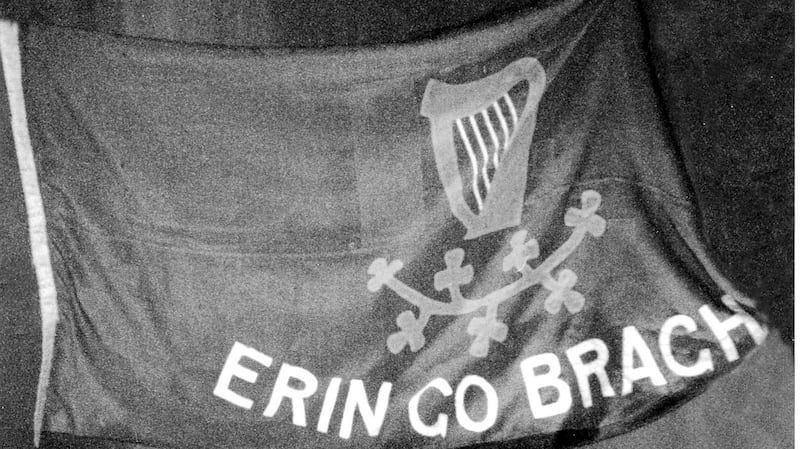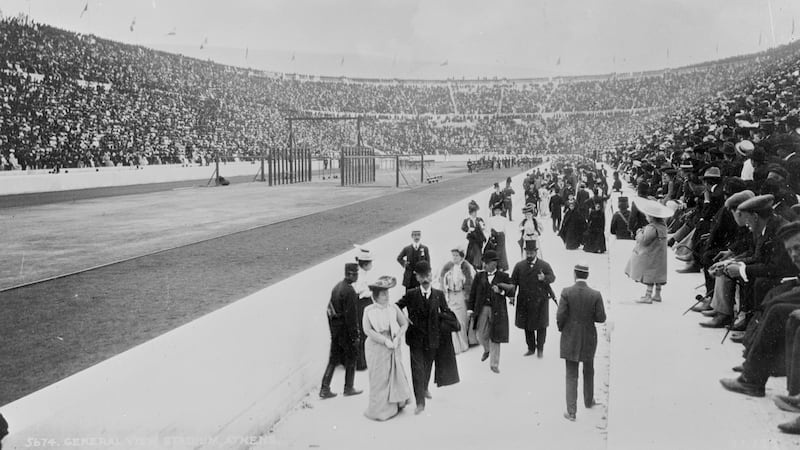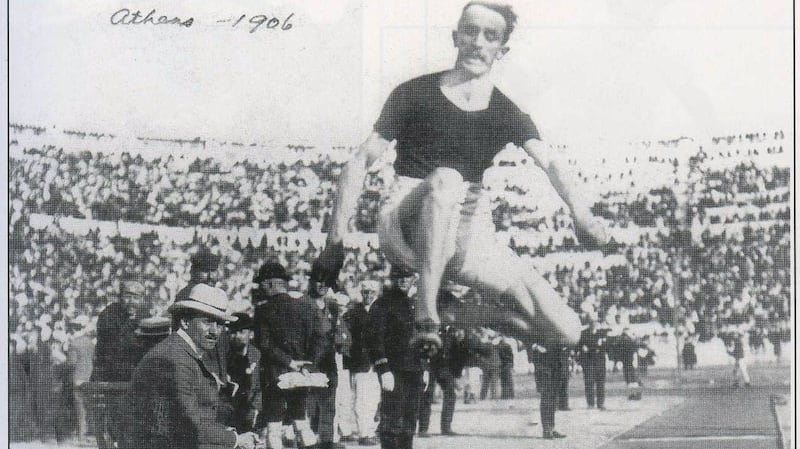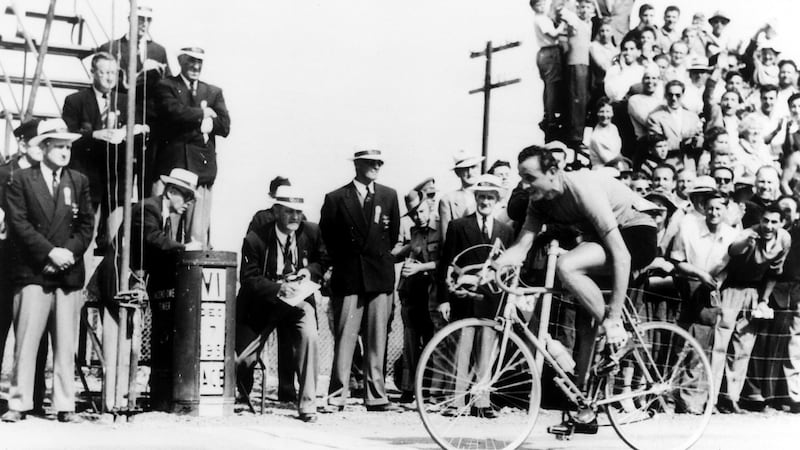Peaceful protest or reckless sabotage, overtly politically motivated or religious in the extreme, several Irish competitors and at least one spectator have a history of taking their stand inside the Olympic arena.
Had the Tokyo Olympics been happening right now, much of the focus would have been on Rule 50 of the International Olympic Committee (IOC), which currently outlaws any sort of protest in or around the Games, such as “displaying any political messaging, including signs or armbands”, “gestures of a political nature, like a hand gesture or kneeling” and “refusal to follow the Ceremonies protocol”. It could result in disqualification - which is why the IOC are carefully reconsidering Rule 50 ahead of the Tokyo Games now set for 2021
Mixing courage, skulduggery, cunning and the near tragic, some of the Irish protests over the years stood out more than others. For better or for worse, right or wrong, there may still be some debate around how or exactly why they unfolded - only no disputing which of them came first.
April 27th, 1906: Athens, Greece
It happened fast and it finished quick. By the time Peter O'Connor had clawed his way up the flagpole, tearing away the Union Jack before promptly waving his bright green flag emblazoned with a golden harp and the words Erin Go Bragh, no one in the direct vicinity could get close. Especially not with his team mates Con Leahy and John Daly keeping guard.

It was 10 years before the 1916 Rising, and as far as O’Connor was concerned there was revolution in the air. At age 34 he was the best long jumper in the world, setting a set a world record five years previously, and an Irish record which stood for 89 years. He’d already been denied once that day inside the Olympic Stadium in Athens, and there was no stopping him now.
Those 1906 Olympics - dubbed the Intercalated Games and a sort of interim competition before London 1908 - did bring together some of the best athletes in the world, O’Connor unquestionably among them. Only the last thing he wanted was to represent Great Britain. So defiant, rebellious, and with a cause, he was ready to make his stand.
Born in Cumberland in 1872, where his father worked in a shipyard, the family moved home to Wicklow a year later, and settled in a small gate lodge beside the newly built reservoir at Ashtown Lane. It was here O’Connor discovered his athletic prowess, learning to hop, skip and jump from the front door to the edge of the path beyond.
After joining the GAA in 1896, at the time one of the chief organisers of Irish athletics, O’Connor was soon winning titles in both jumping events, before leaping into the record books: on August 5th 1901, at The Royal Irish Constabulary Sports in Ballsbridge, he landed at exactly 24 feet, 11 ¾ inches, breaking the long jump world record which had stood to the American Meyer Prinstein. That wasn’t bettered anywhere for another 20 years, and remained the Irish record until Carlos O’Connell jumped in 25 feet, ½ inch in 1990.
O’Connor was fiercely committed, to his event and his country. After proudly declining an invitation to represent Britain in Paris, O’Connor was under the impression athletes could represent their home country at the Intercalated Games, and travelled to Athens with Leahy (a fellow jumper) and Daly (a distance runner) dressed in their own green blazers and shamrock-decorated caps, with James McGough also entered in the 1,500m.

On arrival, they discovered that without an Olympic Council of Ireland to enter them, they would have to represent Britain after all; or so the officials thought anyway.
His favoured event, the long jump, came first, his main rival being Prinstein. Despite his best efforts, the sole judging of American team manager Matthew Halpin effectively made sure he won, as any jump where O'Connor bettered him was judged a foul, and he ended up with silver.
Already steaming, the medal presentation soon followed - the first where national flags were also raised as part of the ceremony. The flagpole was 20m high, the stadium buzzing with around 50,000 spectators, O’Connor’s move already planned in advance. Also known as The King of Spring, The Antelope, and the Royal Lepper, scaling the flagpole proved no obstacle, where in front of the mostly bemused crowd he unfurled his Erin Go Bragh.

Warned off about his behaviour, but not disqualified, three days later O’Connor did win the triple jump, Leahy taking silver, and this time giving his flag a gentle wave from below the flagpole.
O’Connor didn’t compete again on the world stage, living out his life in Waterford where he practiced as a solicitor, and never once regretting his stand: “It caused a great sensation - it received wide publicity in the world’s press and turned the spotlight very much on the Irish political situation at a period when very few dared to raise a protest against the British domination of our country.”
December 7th, 1956: Melbourne, Australia
“Nobody will gatecrash on Friday. They can bring their shillelaghs with them if they like but they won’t be any use.”
Bill Jones, then secretary of the Australian Cycling Association, had already been tipped off about the likely protest of Irish riders in the men’s Olympic road race, and wouldn’t be disappointed: there were no shillelaghs but definitely a stand-off.
Such was the fractious nature of Irish cycling going into the 1950s that the line between sport and politics wasn't so much blurred as removed. For Joe Christle, the driving force behind the first Rás Tailteann in 1953, the struggle to retain recognition for the 32-county National Cycling Federation (NCA), versus the new 26-county Cumann Rothaiochta na hÉireann (CRE), set up in 1949 and granted official recognition by the world governing body UCI, effectively mirrored the wider struggle of the IRA, of which he was an ardent member.
So the NCA selected four riders to compete in Melbourne, knowing full well they would not be approved by the Olympic Council of Ireland, who only recognised the CRE: Paudie Fitzgerald, the then 23-year old from Lispole in west Kerry who had won the Rás earlier that year, along with Tom Flanagan and Tom Gerrard, both from Meath, Gerrard by then already living in Melbourne. Con Carr from Kildare was also selected but couldn't raise sufficient funds to travel.
The trio arrived in Melbourne on December 1st, the same day Ronnie Delany was carving into stone his own piece of Olympic history by winning the 1,500m. The trio hid out in a suburb of Melbourne before their race day, aware a similar protest at the 1955 World Cycling Championships in Italy ended in the arrest of four Irish cyclists.

Before the race start at the Broadmeadows track, NCA-recruited volunteers were already handing out Republican leaflets that had been printed in four languages: “Must we, as Irishmen, beg crumbs from England’s table, so that we may eat on Mount Olympus?”
Wearing plain jerseys with ‘Ireland’ across the front, Fitzgerald, Flanagan and Gerrard made their uneasy way to the start, intent not just on racing but challenging for medals. Some 20 seconds before the start they were singled out by some fellow riders (the Italians included), plus an Irish reporter, who had also been made aware of their intentions, and after the race security couldn’t convince the Irish riders to leave, the stand-off ended after the Australian police soon did.
The race was delayed for 20 minutes, the Irish riders taken to a race marquee a few miles away and released without charge. The Australian media soon moved in, giving the NCA riders the headlines the next day – ahead of the Italian Ercole Baldini, who won the gold medal.
In the immediate aftermath there wasn’t much sympathy at home, as they appeared to take a little of the shine off Delany’s gold, although Fitzgerald was given a hero’s welcome back in Kerry; Flanagan later left for America, and Gerrard never left Australia.
Ten years later, Christle played a part in the blowing up of Nelson’s Pillar in Dublin, and remained one of the driving forces in the seven-year ‘Border Campaign’, before hatching plans for another Olympic protest that this time would garner zero sympathy.
September 7th, 1972: Munich, West Germany
By the time the Olympic road-race gathered for its Thursday morning start, a day later than originally scheduled, it seemed no one was in the mood for any sort of unrest, coming as it did less than 48 hours after the most savage and murderous political protest in Olympic history.
On the Tuesday, 11 members of the Israeli Olympic team had been kidnapped and murdered by eight members of the Palestinian terrorist group Black September, ending a vicious stand-off that also saw the killing of five of the kidnappers and a West German police officer. The Games had been suspended by 34 hours, beginning in sombre mood naturally, only not enough to put off the seven Irish riders who had planned their own little political protest, this one ending in some raised voices and fists but mostly farce.
Central to the cause was their continuing struggle to retain recognition for the 32-county NCA, versus the new 26-county CRE – which again effectively mirrored the wider struggle of the IRA. Four riders had been officially selected by the CRE: Liam Horner, Noel Teggart, Kieron McQuaid and Peter Doyle, and part of the NCA's disgust being that Teggart, a truck driver from Banbridge in Northern Ireland, was among them. He'd definitely been singled out.
As in Melbourne 16 years previously, the NCA group of seven riders made their way to Munich, and among them was John Mangan, who had won the Rás earlier that summer, plus fellow Kerry riders Batty Flynn and Pat Healy, Gabriel Howard and TP Reilly from Meath, and northerners Brian Holmes and Joe McAloon.
Wearing white jerseys with a green and orange hoop, four of these seven riders tried to infiltrate the start, handing out leaflets protesting the British occupation of Northern Ireland as they did. Spotted by the West German police, all but Healy were peacefully removed – all while Mangan, Flynn and McAloon were hiding out in the bushes further up the course, waiting to ambush the race. (The trio had actually been hiding there the morning before, not realising the race had been postponed by a day due to the massacre.)
What unfolded then was more embarrassment than protest: there was a 15-rider pile-up as police tried to remove Flynn, who had briefly taken the race lead (causing some confusion for the TV commentators who described him as “an unknown Dutchman”) and later Mangan and Teggert clashed on and then off the bike, raising fists and voices at each other, all while getting very little sympathy.
Teggert, not surprisingly given the ambush by his fellow countryman, didn't finish the race and never rode internationally again: Horner did finish 38th, McQuaid two places back, and Doyle in 69th, but the entire experience had been overshadowed by the actions of the NCA, and was widely condemned, including by then taoiseach Jack Lynch, who was in attendance in Munich: "These team representatives were cycling for Ireland and the interference was a travesty of sportsmanship – reflecting no credit on the country," he stated.
Fifteen years after Munich, agreement was reached to form to present Cycling Ireland, the unified cycling association representing the 32 counties.
August 29th, 2004: Athens, Greece
Trouble can come at you from most directions in the marathon, but only once in Olympic history did it come from the blind side, in the form of a defrocked Irish priest with a history of mental illness, and in the deciding miles of the race for gold, silver and bronze.
For Cornelius ‘Neil’ Horan, the then 57-year-old Kerry native who had moved to London, it wasn’t so much a protest as a promotion of his religious belief that the end of the world was near. Either way all that unfolded here was a disgrace.
Already known for his dangerous protest during the British Grand Prix in July of the previous year, and subsequently handed a two-month prison sentence, Horan made his move shortly before the men’s marathon’s 22-mile mark, running onto the street and pushing race leader Vanderlei de Lima of Brazil into the crowds that lined the course.
De Lima had been 30 seconds ahead, tried to recover, but was passed two miles later by the Italian Stefano Baldini, who went on to win the gold medal: Lima was also passed by the American Meb Keflezighi, but still held on for the bronze.
Horan was immediately arrested by Greek police. Tied to his chest were the words: “The second coming is near, says the Bible”. De Lima later said: “I lost the gold medal in that moment, but I was afraid because I didn’t know whether he was armed. I’m sure I would have won the gold were it not for this crazy idiot.”

Officials swiftly confirmed that the result would stand. But the International Olympic Committee, recognising the injustice to De Lima, did decide to present the Brazilian with their special Pierre de Coubertin medal. The following morning, Horan was given a 12-month suspended sentence, given his mental condition, yet still he showed no remorse for his action, telling the Greek police he staged the disruption to “prepare for the second coming”.
Relatives of Horan, including his brother Dan, did publically state their regrets: “He has this belief that the world hasn’t that much time left to go and the imminent return of the Lord. I keep saying to him: ‘Everybody would respect anyone to have their views on anything, no matter what it is. Nobody can deprive you of that, but you don’t force it down people’s throats’.”
Two years after Athens, during the 2006 World Cup in Germany, Horan was arrested by German police before he could stage another planned protest, this one in support of Adolf Hitler. He spent two months in custody awaiting trial but was released without charge.
De Lima went on to win the Tokyo International Marathon in 1996, and lit the cauldron during the opening ceremony of the 2016 Olympics in Rio. He later forgave Horan, saying “my bronze medal means gold to me”, which in some ways represents the perfect sporting protest.






















